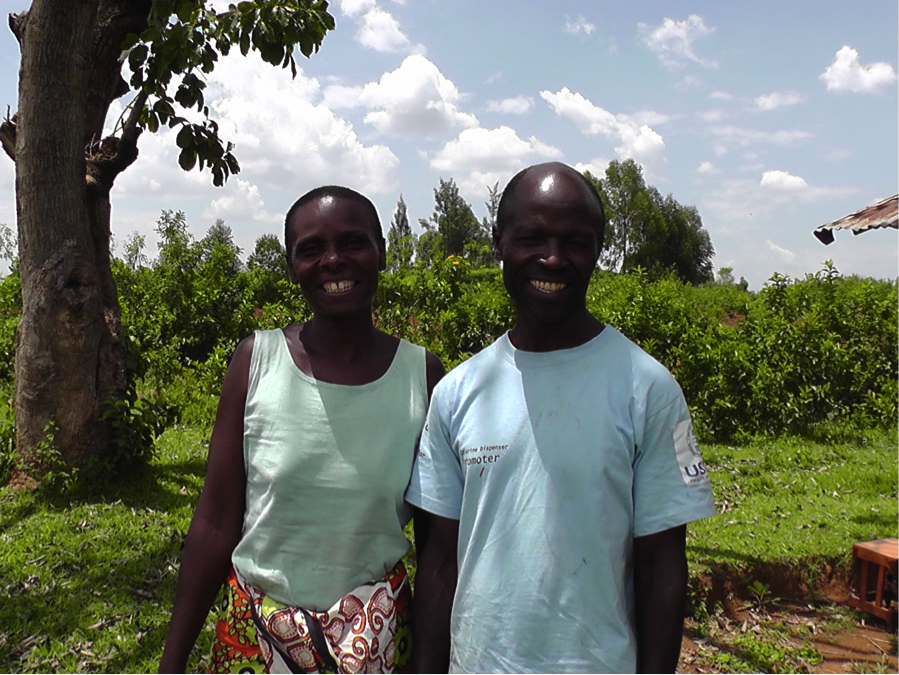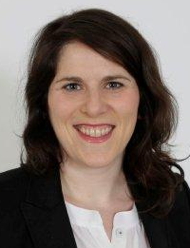Our guest author, Emily Alpert, Deputy Director of Agriculture for Impact, concludes our series of blog articles on resilience published in partnership with the International Food Policy Research Institute (IFPRI) ahead of the conference “Building Resilience for Food and Nutrition Security” 15-17 May 2014.
An acre is about the size of a football pitch. That might seem like a lot, but if your livelihood depends on it, it is rather small. In a good year, (that is with good seed, fertilizer and rain) a farmer can yield about 3 tons of maize on one acre. You might wonder why the 500 million or so smallholder farmers worldwide, who by definition farm on less than five acres (two hectares), farm at all. But my recent trip to Bungoma, Kenya, proved that there are ways these small farmers can be supported to build more robust livelihoods. The Montpellier Panel, Growth with Resilience report, for example, makes the case that people can be resilient with support for women and youth, diversified incomes and better nutrition.
FOCUS ON RURAL WOMEN AND YOUTH
We talked to Fumona, a single mother and grandmother. Over 30 percent of rural households in Kenya are headed by women, and focusing support on rural women proves to have a positive impact on health, nutrition and education levels for the rest of the family, thus contributing to more resilient communities. Funoma has been receiving credit, inputs, training and insurance from NGO One Acre Fund. Fumona planted more than just maize this year as an outbreak of Maize Lethal Necrosis Disease (MLND) could have destroyed her entire crop. Instead, with advice from One Acre Fund she divided her acre between finger millet, maize, beans and groundnuts. She ended up with an astounding seven bags of finger millet (about 70 kg) from planting just a quarter-acre, or in other words, more than enough to feed her family and leftovers to sell.
DIVERSIFY LIVELIHOODS
Farmers situated near Kisumu in a small village called Siaya such as Timothy Okoth, his wife Jennifer and their 5 children, weren’t as lucky. With just a few goats and a couple of chickens milling about the village, it was clear that these farmers have very little to fall back on if the rains are too short or their crops are damaged by pest or disease. Last year they faced severe drought and only produced 6 bags of maize that simply was not enough for the 7 of them.  Diversity is key to resilience as an entire livelihood can be wiped out if you are reliant solely on one crop. When and where these options don’t exist, safety nets can catch your fall and help you to bounce back more quickly. Even though drought ravaged Timothy and Jennifer’s crops, they were relieved to be One Acre Fund members. In addition to their package of seeds and fertilizer, they also bought an insurance policy. The insurance pay-out turned out to be a very smart investment indeed; enabling them to stay on their feet in hopes of better rains to come.
Diversity is key to resilience as an entire livelihood can be wiped out if you are reliant solely on one crop. When and where these options don’t exist, safety nets can catch your fall and help you to bounce back more quickly. Even though drought ravaged Timothy and Jennifer’s crops, they were relieved to be One Acre Fund members. In addition to their package of seeds and fertilizer, they also bought an insurance policy. The insurance pay-out turned out to be a very smart investment indeed; enabling them to stay on their feet in hopes of better rains to come.
SCALE UP NUTRITION
40 percent of children under five in sub-Saharan Africa are stunted. Adequate nutrition not only prevents irreversible damage to physical and mental abilities, but helps children become more resilient in the face of disease. To that end, the farmers we visited in Siaya are learning how to build a nursery for sukumu seedlings, a nutrient-rich kale variety. The sukumu will not only help to provide essential vitamins and minerals, but also a potential source of income. They hope that One Acre Fund will also help them access seeds for onions and tomatoes to eventually sell in their local markets.  So can you survive on one acre or less? It’s not easy, but it is doable, especially when there is good weather. And when there’s not, one hopes that more farmers will have the access to and choose to participate in programmes like One Acre Fund. Resilience for farmers on an acre or less might still require cattle and kale, but making a wise investment never hurts either.
So can you survive on one acre or less? It’s not easy, but it is doable, especially when there is good weather. And when there’s not, one hopes that more farmers will have the access to and choose to participate in programmes like One Acre Fund. Resilience for farmers on an acre or less might still require cattle and kale, but making a wise investment never hurts either.
This blog article is part of an ongoing series on resilience being published ahead of an upcoming IFPRI conference to be held in Addis Ababa, Ethiopia in May 2014. Building resilience means helping people, communities, countries, and global institutions prevent, anticipate, prepare for, cope with, and recover from shocks, not only helping them to “bounce back” but also to become better off. This conference aims to help set priorities for building resilience, to evaluate emerging threats to resilience, and to draw lessons from humanitarian and development responses to previous shocks.



